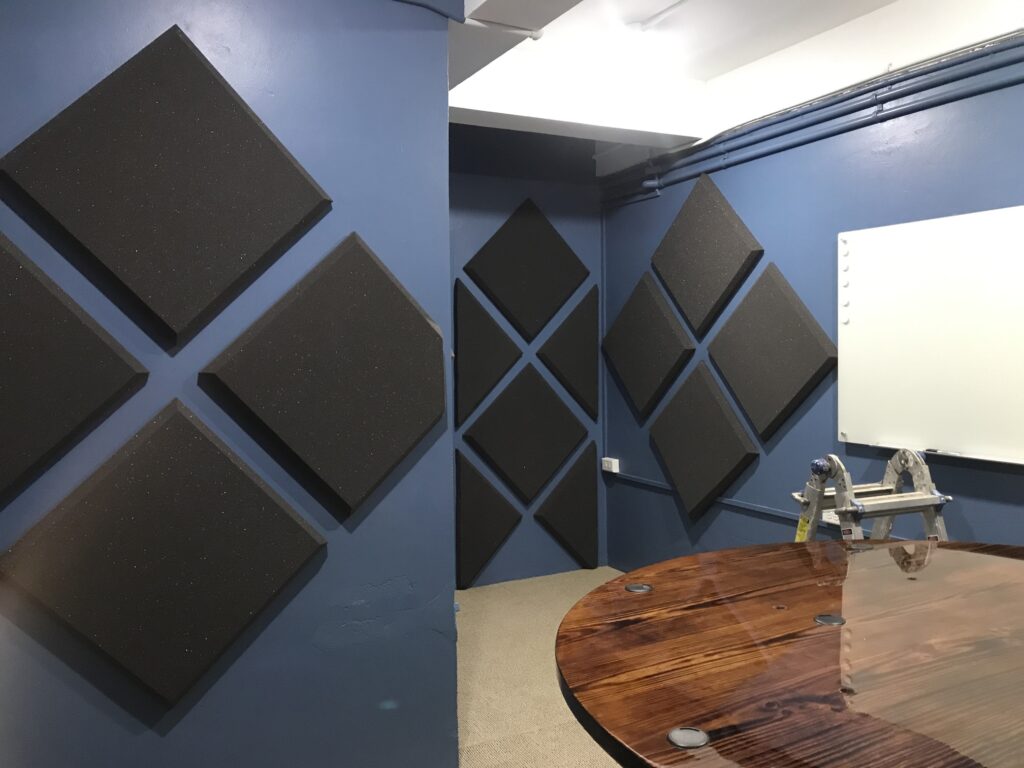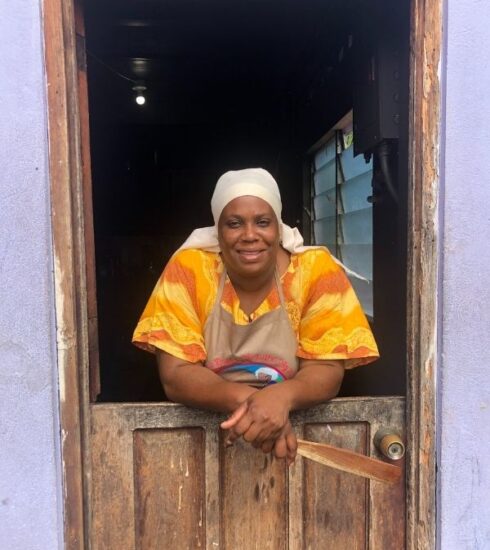Challenge the status quo
Ruth Cumberbatch always knew she wanted to earn a living doing what she loved, work in a creative field. So even while going through secondary school, she charted her course by being one of the first females to enroll in woodworking at Woodbrook Government Secondary.
“I never liked people telling me what I can or cannot do, without a good reason. So I always challenge the status quo”, says Cumberbatch.

Cumberbatch being the eldest of five, developed a mindset for business at an early age. Her love for creating and construction came from observing her father, who is a “Jack of all trades”. Born in Port of Spain, Trinidad, she spent her teenage years as a very active member of the Maritime Checkers Women’s Hockey club and the Olivet gospel hall youth group.
Two organizations which directed her business acumen and sparked her inquiry into the Interior Designing field. Her thirst to express herself creatively extended even while employed at a local bank, where she continued her study and understanding of interior design concepts and principles privately. After leaving the bank, she obtained her level 1 certification in joinery and furniture construction and continued using her skills on residential and commercial projects under the name Interactive Interiors.
Interactive Interiors became a full service interior design studio which offered design/build, 3D rendering and residential and commercial fit out services etc. She also provided decoration services for many large corporations. After some personal challenges and the need for a change in scenery, in 2009 Ms Cumberbatch in collaboration with another designer, got the opportunity to work in the hospitality industry in Tobago and after being smitten by the beauty of the Island, has not left since. After several years Ms. Cumberbatch established a new Interior design consultancy- Ruth Cumberbatch Designs Ltd.
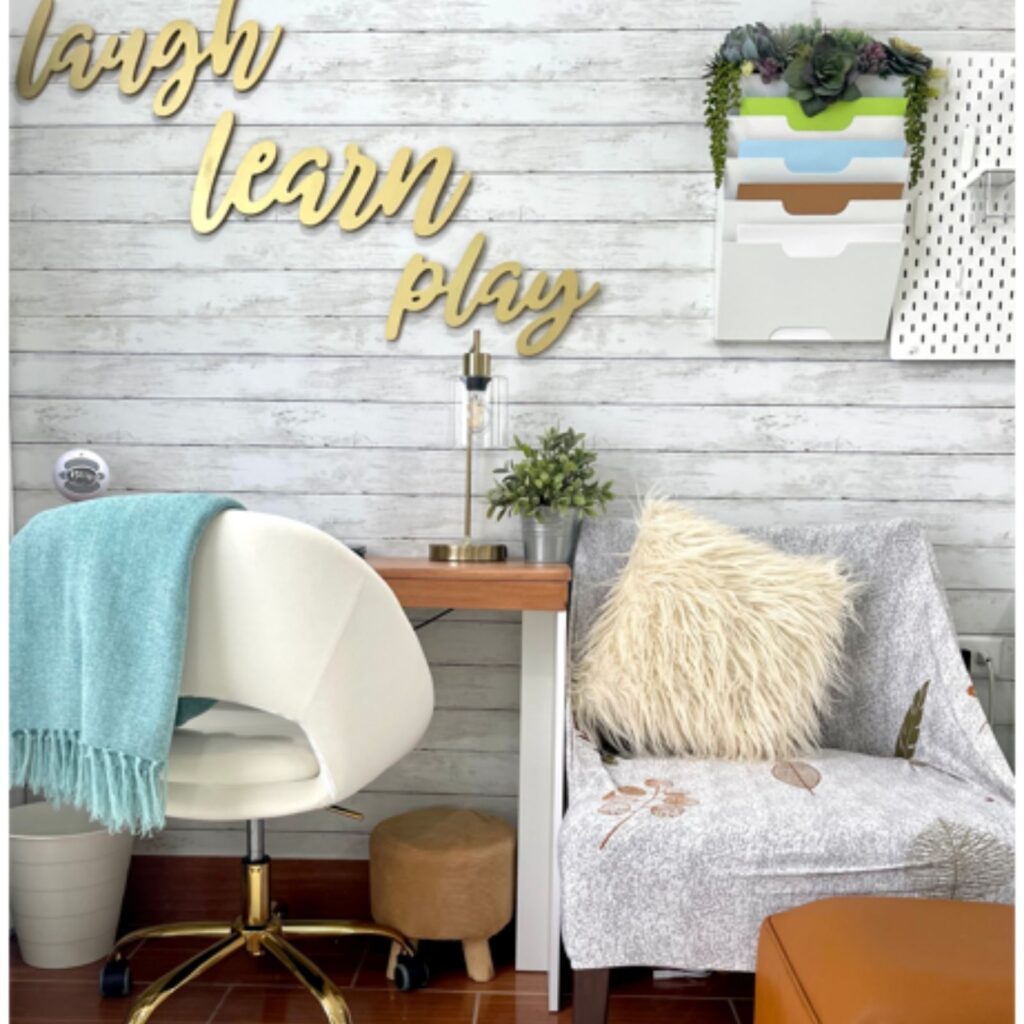
Taste of Tobago had an opportunity to meet with Cumberbatch to hear more about her journey.
What determined your passion for design? Tell us about the moment when you decided this is the way to go.
Out of secondary school, I was determined not to sit at home. So I went about looking for employment. I started off working for a clothing store in Long Circular Mall. During this time, I pursued accounting classes. Soon after, I got a job as an accounting assistant at a small accounting firm in Port of Spain, through the recommendations of one of my “hockey moms”. One day I sat down working late to try to balance the ledger of a large company and also had to do stock taking for another large company the next day.
I started thinking – Do I want this to be my life? Will I enjoy earning money in this field? The answer was “hell no” However, that didn’t deter me from accepting a position in a training program by the bank. I allowed others to convince me that it was a way to get closer to my personal goals. I told myself that all I needed was three years which eventually turned into nine years four months.
The bank was a different environment. It is corporate, with restrictions on how you look and dress. I didn’t like having to temper my creative flair in the way I dressed and the items I kept in my work space, and some of the bank’s philosophies didn’t quite mesh with mine. As a result, I found myself having to choose between staff meetings or picking up my young children from school.
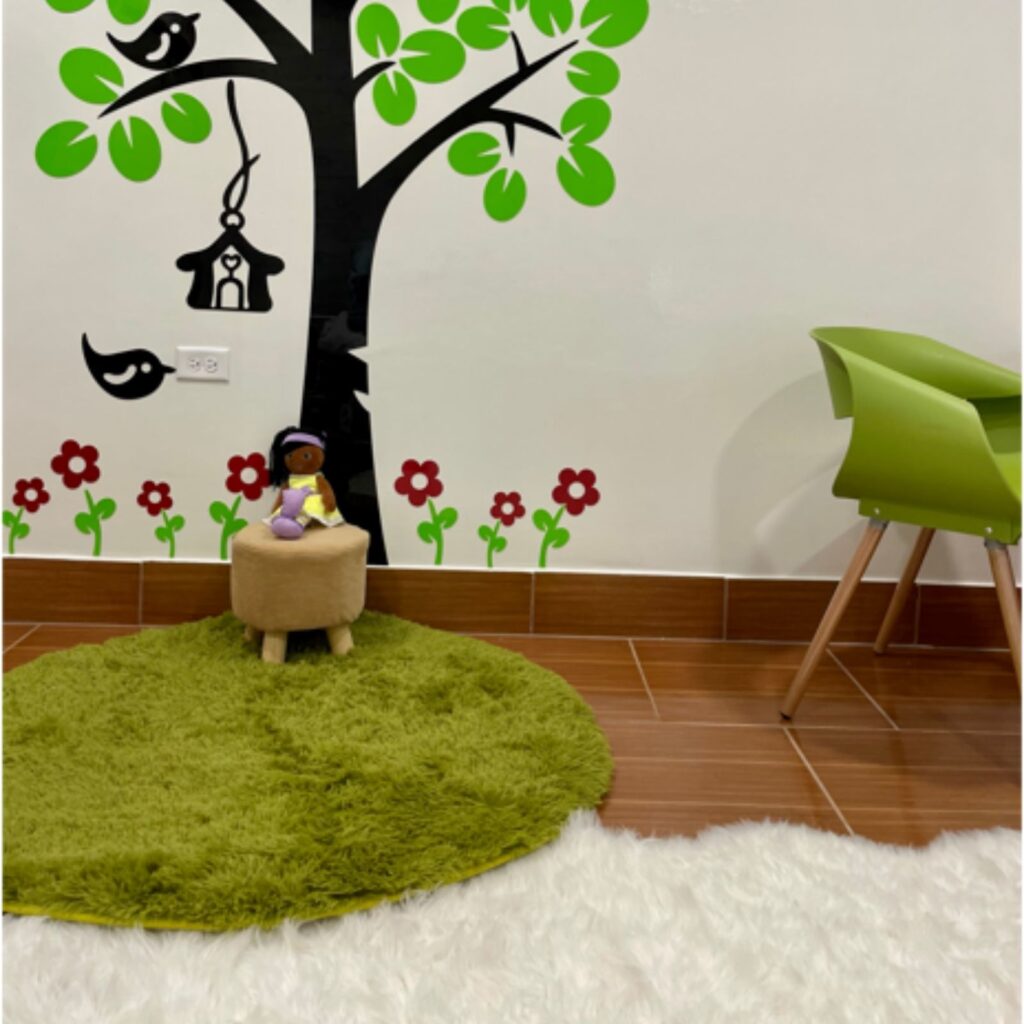
I needed to do something to keep myself sane and find some peace of mind. I spoke to my husband at the time and threw out the idea about starting my own business to some of my customers who became friends and eventually, became my first clients. I wrote my resignation, and from there, while continuing my studies, I was able to land projects through client referrals.
How did you start?
I started with an online interior design program in England. Converting everything into pounds got expensive, so I decided to change my course of study to a US Institution. Began at the Art Institute of Pittsburgh and then switched to the Art Institute of Fort Lauderdale due to some restructuring.
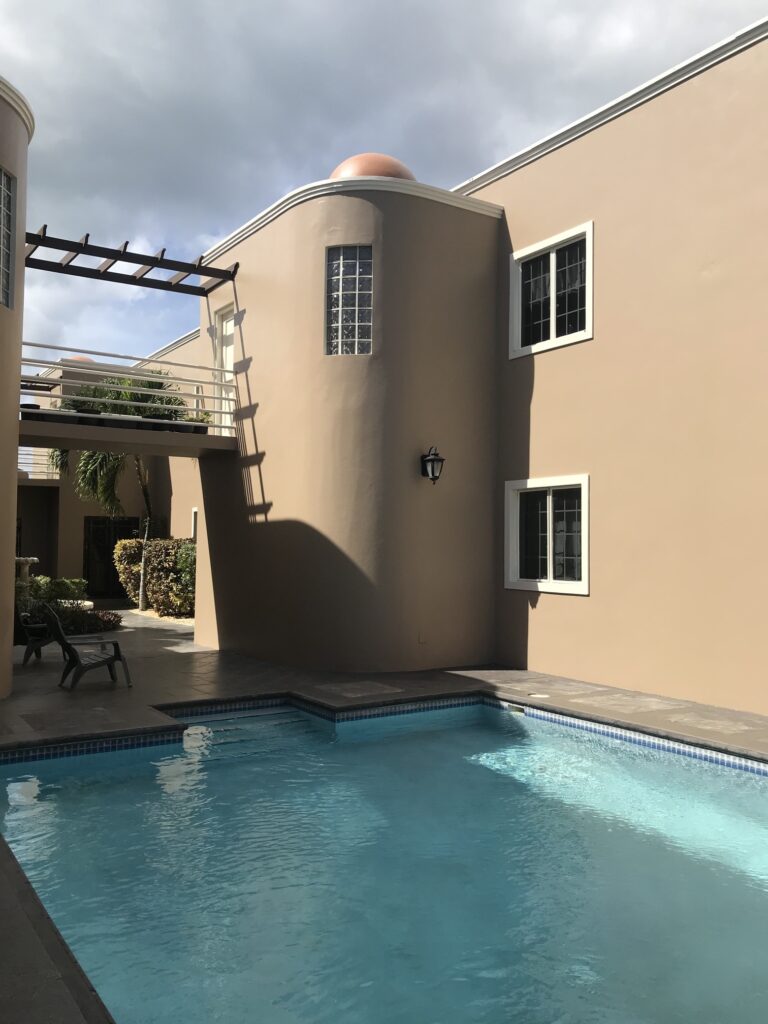
What’s the difference between an interior designer and an interior decorator?
An interior designer takes your space from planning to execution. We learn how to deal with structure, take down walls, reassign walls, do layouts, manage the contractor to recreate or utilize an area based on your needs. We also save you lots of time and money if you consult with us before any infrastructure is put up. An interior decorator, on the other hand, works with making an existing space look better.
Can you remember your first design project?
It was a former customer of the bank, a residential project, revamping the upstairs and downstairs of their home. The internet wasn’t as readily available as it is now, so I was inspired by reading magazines, newsletters, product brochures etc and with the knowledge I gained from my course work, I started from there. Although it was a scaled-down project, it was an excellent start. My clients were open to structural ideas, and upon completion, they were pleased. Completing that project gave me the boost that I needed. It let me know that I was on the right track.
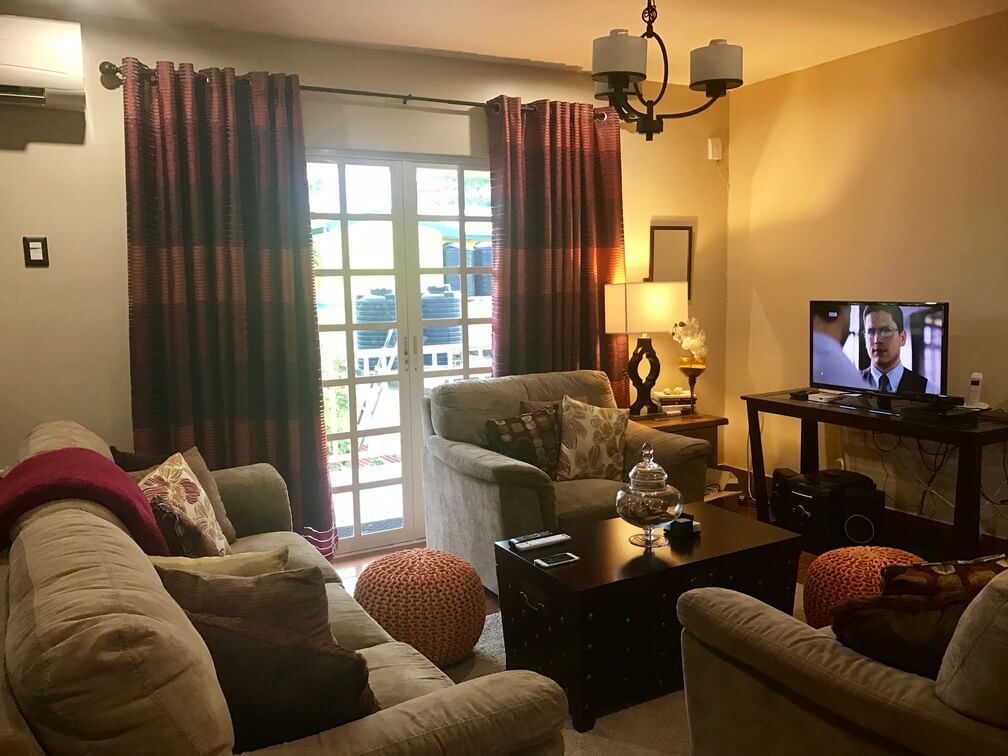
What is the most frustrating aspect of your job as a designer? And the most rewarding one?
When we start a project and can’t see it to completion, it lingers with you. The thrill for me is seeing the client’s face when we do the reveal.
The project becomes my baby. It’s about taking that vision and 3D model and making it come to life.
Why Tobago?
I came to Tobago in 2009 with another interior designer to assist in upgrading Tobago hotel room stock. We were tasked with taking 8 hotels in the program to “3 star” quality. We looked at the hotels and submitted our recommendations and observations. However, the project wasn’t properly executed by the clients, but I fell in love with the island. I was never fond of the business in Trinidad. I dread traffic, and in Tobago, I didn’t have to worry about either. I was also going through a transitional stage in my life, so it was the best fit for me.
What inspires you?
Life inspires me and the opportunities that it brings. There is a possibility in everything.
I am about solutions, a problem solver; I love to see the outcome and where that path can lead you.
Does Tobago have a design style? If yes, what would it be?
One of the things I noticed very early, the colonial style of building is everywhere and I know it comes from Tobago’s rich history. This is evident in the fretwork, use of shutters and the preservation of wooden structures. There is a historic charm on the island.
What are some projects that we should undertake in Tobago?
I noticed over time; the newer buildings do not reflect the colonial or traditional charm of the island. Instead, you can find modern structures in the middle of rural communities. The new buildings no longer fit within the landscape that they are in. When we are designing, we should capture the soul of the space and landscape. When architectural elements are used they should always be pleasing and should also suit Tobago.
The new modern structures have clean lines and lots of metal versus traditional wood structures. This isn’t necessarily a good thing as Tobago is an island which is bombarded by sea blast due to it’s location and size.
The transitional look similar to that of the Magdalena Hotel allows Tobago to trend with the times while still maintaining its architectural integrity. I think this is a conversation that needs to be had by all stakeholders, regardless.
Another observation is the poor use or lack of properly planned green spaces. Tobago’s marketing involves a theme that hasn’t been well evidenced by the look, feel or even the availability of facilities on the island.
Share something you would like the world to know about you or your ideas.
I love happy, fun spaces. My greatest joy is watching children investigate and enjoy their spaces. I love the outdoors and attempt to create elements of the outdoors within my designs. This pandemic has had me indoors. However, I’ve found a way to infuse some sort of balance in my new normal. I’m converting one of my guest bedrooms into a work space / gym/ playroom where I can work and enjoy seeing my 2 year old at play. It gives me pleasure to see her interacting in this space.
What advice do you have for persons interested in this field?
I firmly believe that interior design is more accessible now. Scholarships that offer interior design are more available than people would think. Increase your knowledge of art and architecture by reading. Search online channels like YouTube and Houzz.com. Institutions like the Art Institute have courses for varying levels and financing is also available. Find programs which speak to your particular interest, then go from there.
If you want to know if interior design is where your passion lies, ask yourself this, “If I could afford to do Interior Design without being paid, would I?…There you’ll find your answer.

Photo Credits: Ruth Cumberbatch Designs
https://www.instagram.com/ruthcumberbatchdesigns/
https://www.facebook.com/ruthcumberbatchdesigns
YouTube: @TheHandyMom868
Cover Image: Siren Communications – (Castara Nature Lodge and Retreat)Depiction of modern and traditional design elements










